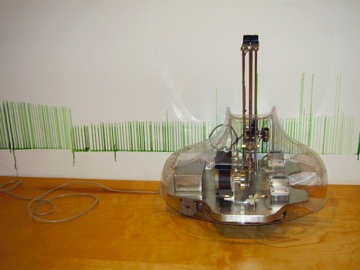A bunker built for the cold war at the Parkstrasse Ubahn station. the bunker is behind an ordinary door that people walk past everyday.
in the event of nuclear war, the concrete wall behind this panel would slide into place, effectively
turning the ubahn station into a bomb shelter
this type of architecture is analogous to my arm radios / electromagnetic waves. the bunkers are present in everyday life, yet, in order to be inhabited / perceived, they need to be modulated by an external force / structure. without war, the bunker lies dormant; without the body, antenna and architecture, electromagnetic waves remain below the surface of perception.
these bunkers serve as extensions of the u bahn beyond the immediately perceived city. bathrooms, morgues, tunnels, sleeping areas reach out into the void.






